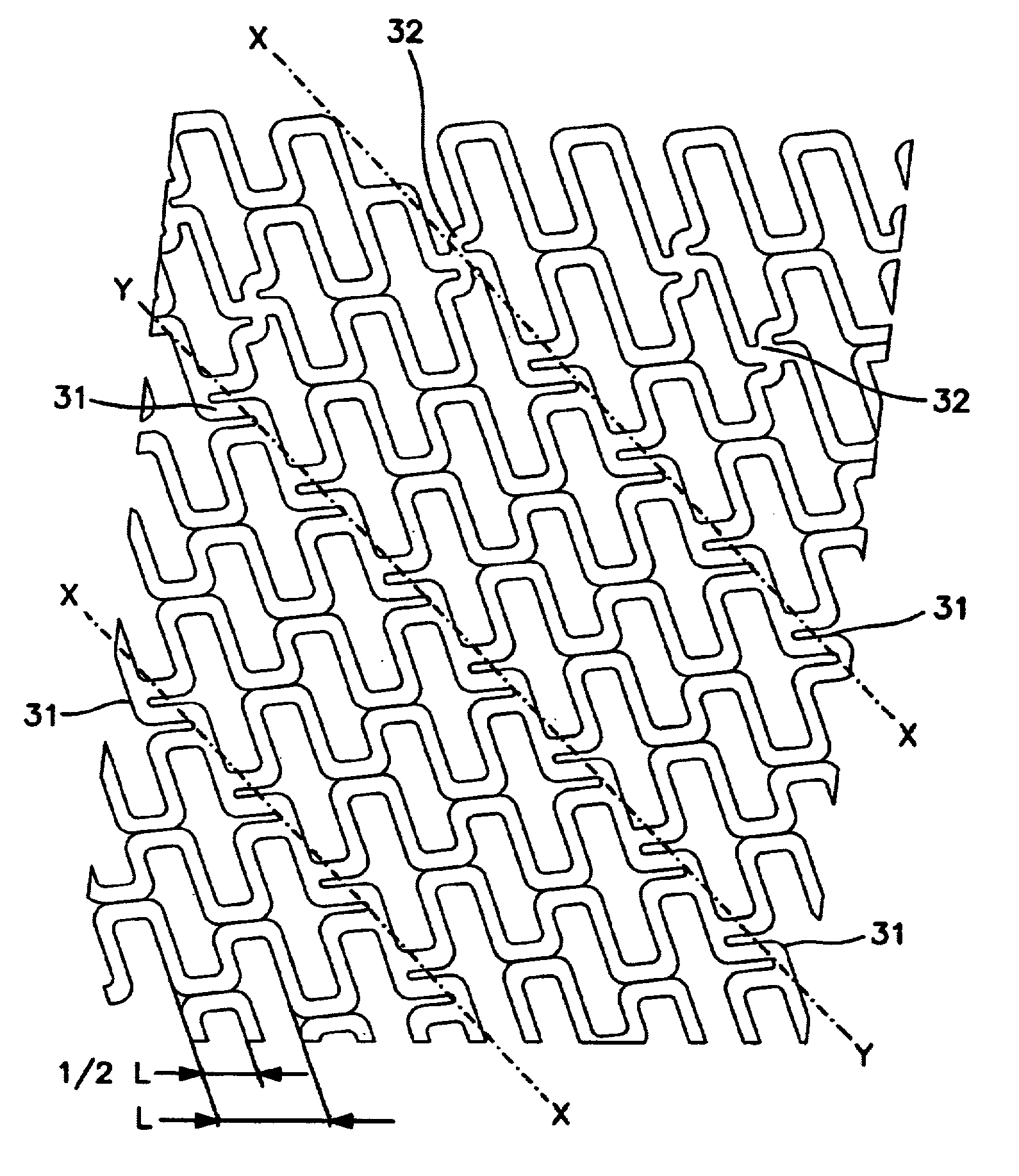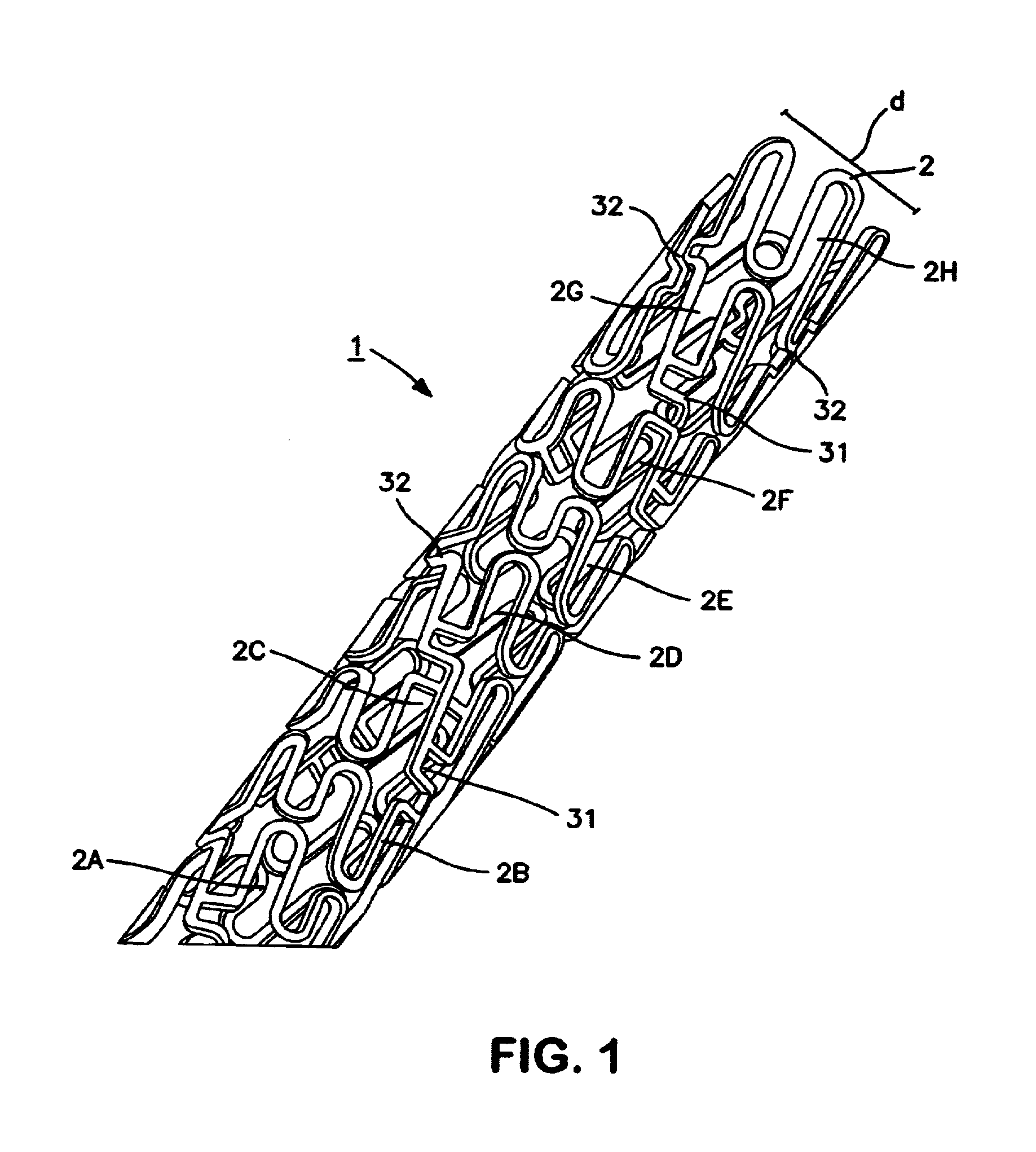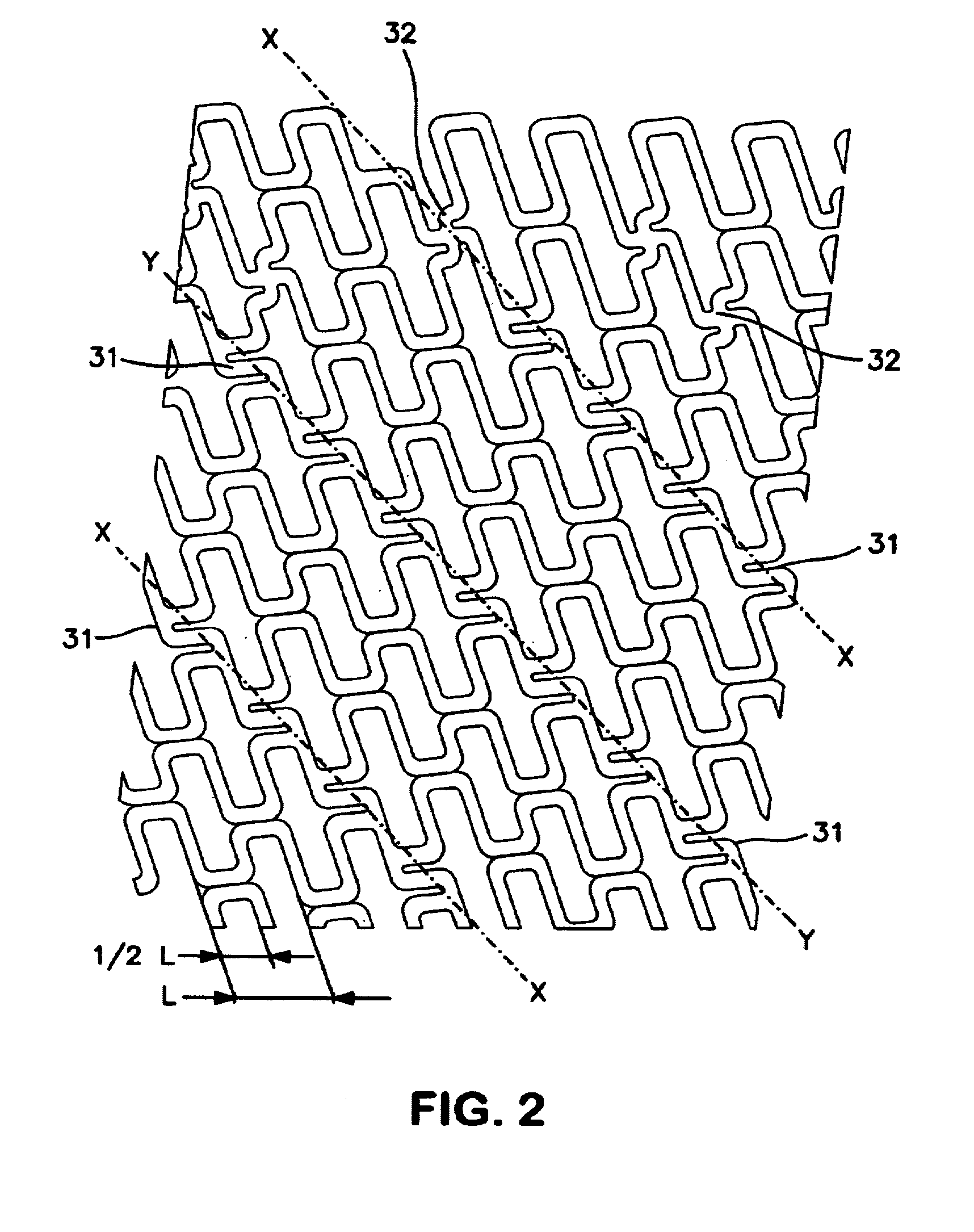Expandable intraluminal endoprosthesis
a technology of endoprosthesis and expandable parts, which is applied in the field of expandable intraluminal endoprosthesis, can solve the problems of reduced and even poor stent-to-vessel ratio at these locations, and high rigidity of stent segments in their crimping and deployed state, so as to improve the mechanical bond and improve the behaviour of this part, the effect of improving flexibility
- Summary
- Abstract
- Description
- Claims
- Application Information
AI Technical Summary
Benefits of technology
Problems solved by technology
Method used
Image
Examples
first embodiment
[0047]Different to the structure of the first embodiment, connection elements 33 to subsequent turns of said pattern are shifted by about a full pitch distance. As a result a full undulation 25 will link said connection elements 33 to one another and as such creates an elongated member 25 in between the connection elements 33. Said elongated member formed by an intermediate undulation comprises a S-curved bent and is longer than the linear distance between the interconnection elements thereby linked to each other, at least in the crimped state shown in FIGS. 5 and 6. This imparts additional slack and considerable expandability to the spinal ladders which are formed by such a series of linked connection elements in the deployed state shown in FIG. 7. Moreover the orientation of the S-curved bents in said elongated members 25, which is substantially parallel to the longitudinal axis of the body at least in the crimped state shown in FIGS. 5 and 6, allows the member 25 to uniformly exp...
second embodiment
[0051]Also the elongated members interlinking a series of connections elements like in the second embodiment need not coincide with undulations of the pattern and can be introduced in the structure as separate elements. These members moreover need not necessarily comprise a full S-curved bent or even any S-curved bent at all and may on the other hand consist of more than just one such bent. Also in this respect the designer has total freedom to tailor the device to his demands.
PUM
 Login to View More
Login to View More Abstract
Description
Claims
Application Information
 Login to View More
Login to View More - R&D
- Intellectual Property
- Life Sciences
- Materials
- Tech Scout
- Unparalleled Data Quality
- Higher Quality Content
- 60% Fewer Hallucinations
Browse by: Latest US Patents, China's latest patents, Technical Efficacy Thesaurus, Application Domain, Technology Topic, Popular Technical Reports.
© 2025 PatSnap. All rights reserved.Legal|Privacy policy|Modern Slavery Act Transparency Statement|Sitemap|About US| Contact US: help@patsnap.com



